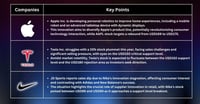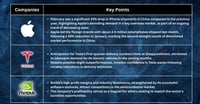Dip buyers showed up when market opened this morning, after Trump’s doctors said he’s doing well and could be discharged as soon as Monday. Markets fell on Friday after Trump’s diagnosis. They remained up for the week as some traders speculated the president’s illness raised the odds for economy aid from the Congress and data showed job gains slowed in September and many Americans quit looking for work.
Dip buyers showed up when market opened this morning, after Trump’s doctors said he’s doing well and could be discharged as soon as Monday. Markets fell on Friday after Trump’s diagnosis. They remained up for the week as some traders speculated the president’s illness raised the odds for economy aid from the Congress and data showed job gains slowed in September and many Americans quit looking for work.
The dramatic turn of events may be a catalyst for a stimulus agreement. Markets wait for bills to be put to Congress and votes to be taken. With key economic data extending its run of disappointments versus expectations and high-profile corporate layoffs, additional aid would seem imperative.
US stocks so far have stayed relatively resilient since Trump’s positive test, in part due to a speculation that the Congress will move toward an aid package after large parts of the current bill expired at the end of July. While the president urged lawmakers to get stimulus passed in a weekend tweet, little new progress was reported since Friday.
Still, there’s no denying the presidential election has put investors on high alert. Partly driven by the prospects of a contested election, option traders have stepped up hedges against market turmoil way past Election Day into December. Polls over the weekend showed Democratic challenger Joe Biden maintaining his lead with less than a month to vote.
Markets are in a waiting mode now with some optimism and expectations that Trump may show some compromising stance after recovering from COVID-19 to push talks on stimulus forward. Still, the situation remains uncertain.
What Did US Jobs Report Show?
Hiring gains slowed sharply heading into the fall as more layoffs turned permanent, adding to the signs that the US economy faces a long slog to fully recover from the coronavirus pandemic.
Employers added 661,000 jobs in September, the Labour Department said Friday. The increase in payrolls shows that the labour market continued to dig out of the hole brought by the pandemic, but at a much slower pace than over the summer.
The US has replaced 11.4 million of the 22 million jobs lost in March and April, at the beginning of the pandemic. Job growth, though, is cooling, and last month marked the first time since April that net hiring was below one million.
Friday’s jobs report is the final one before the presidential election, which faces fresh uncertainty after President Trump and First Lady Melania Trump were tested positive for COVID-19. Mr. Trump and Democratic presidential candidate Joe Biden have promised to create millions of jobs to advance economy’s recovery from the pandemic-induced shock in spring. Other signs of a slowing US recovery include a drop in household income at the end of summer and smaller gains in consumer spending, the economy’s main driver.
The unemployment rate fell to 7.9% in September from 8.4% in the prior month. Though the jobless rate is down sharply from a pandemic high of near 15% in April, last month’s drop partially reflected an increase in permanent layoffs and more people leaving the labour force. That could stem from more workers quitting their job searches due to weak employment prospects or childcare responsibilities.
Fullerton Markets Research Team
Your Committed Trading Partner














